Vatican City, a city-state surrounded by Rome, Italy, is the headquarters of the Roman Catholic Church. It’s home to the Pope and a trove of iconic art and architecture. Its Vatican Museums house ancient Roman sculptures such as the famed “Laocoön and His Sons” as well as Renaissance frescoes in the Raphael Rooms and the Sistine Chapel, famous for Michelangelo’s ceiling.
Vatican City contains religious and cultural sites such as St. Peter’s Basilica, the Sistine Chapel, and the Vatican Museums. They feature some of the world’s most famous paintings and sculptures. The unique economy of Vatican City is supported financially by donations from the faithful, by the sale of postage stamps and souvenirs, fees for admission to museums, and sales of publications. Vatican City has no taxes and items are duty-free.
The two must-see sights are St. Peter’s Basilica and the Sistine Chapel, but the Vatican Palace contains magnificent rooms decorated by the greatest artists of their time, as well as priceless collections in more than a dozen museums. In addition to the major museums, smaller collections will appeal to specialized interests: the Museum of Secular Art’s ancient sculpture, the Museum of Sacred Art’s finds from catacombs and early Christian churches, the Map Gallery, a gallery of candelabras and tapestries.
1.Sistine Chapel
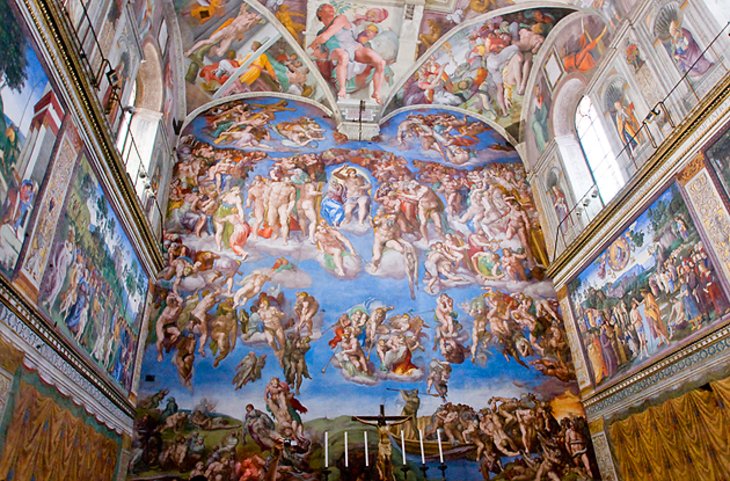
The Sistine Chapel is a chapel in the Apostolic Palace, in Vatican City and the official residence of the pope. Originally known as the Cappella Magna, the chapel takes its name from Pope Sixtus IV, who had it built between 1473 and 1481.
During the reign of Sixtus IV, a team of Renaissance painters that included Sandro Botticelli, Pietro Perugino, Pinturicchio, Domenico Ghirlandaio and Cosimo Rosselli, created a series of frescos depicting the Life of Moses and the Life of Christ, offset by papal portraits above and trompe-l’œil drapery below. These paintings were completed in 1482, and on 15 August 1483 Sixtus IV celebrated the first mass in the Sistine Chapel for the Feast of the Assumption, at which ceremony the chapel was consecrated and dedicated to the Virgin Mary.
The first stage in the decoration of the Sistine Chapel was the painting of the ceiling in blue, studded with gilt stars, and with decorative borders around the architectural details of the pendentives. This was entirely replaced when Michelangelo came to work on the ceiling in 1508.
Of the present scheme of frescos, the earliest part is that of the side walls. They are divided into three main tiers. The central tier of the walls has two cycles of paintings, which complement each other, The Life of Moses and The Life of Christ. They were commissioned in 1480 by Pope Sixtus IV and executed by Domenico Ghirlandaio, Sandro Botticelli, Pietro Perugino, Cosimo Rosselli and their workshops. They originally ran all round the walls, but have since been replaced on both end walls.
2.Pinacoteca (Picture Gallery)
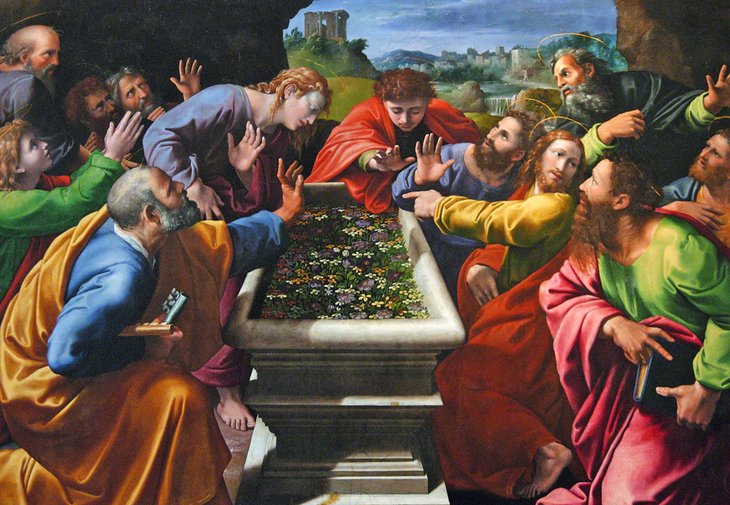
The Pinacoteca has a wide-ranging collection of Brazilian art, mainly noted for its vast assemblage of 19th-century paintings and sculptures, one of the largest in the country, as well as for a number of iconic Brazilian Modernist artworks. The collection also includes a department of works on paper, European paintings and sculptures from 19th-century artists, decorative arts, etc.
Even though it was robbed of many of its treasures by Napoleon, the Pinacoteca contains 16 rooms of priceless art from the Middle Ages to contemporary works. Arranged in chronological order, the pictures give an excellent survey of the development of Western painting. Medieval art includes Byzantine, Sienese, Umbrian, and Tuscan paintings, as well as a Giotto triptych and a Madonna and St. Nicholas of Bari by Fra Angelico.
here is a triptych by Filippo Lippi, Coronation of the Virgin by Pinturicchio, and a Madonna by Perugino. A room is devoted to tapestries from cartoons by Raphael; his Madonna of Foligno; and his last painting, the famous 1517 Transfiguration. Portraits include da Vinci’s unfinished St. Jerome, a Titian Madonna, and Caravaggio’s Entombment.
3.Piazza San Pietro (St. Peter’s Square)
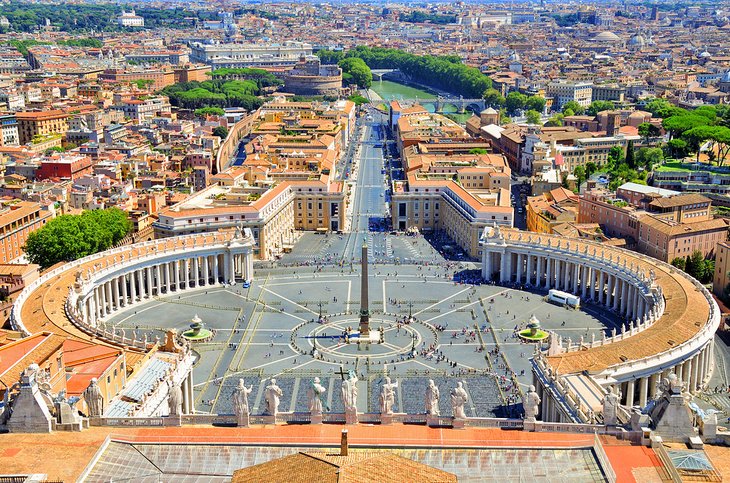
Saint Peter’s Square is a large plaza located directly in front of St. Peter’s Basilica in Vatican City, the papal enclave inside Rome, directly west of the neighborhood of Borgo. Both the square and the basilica are named after Saint Peter, an apostle of Jesus considered by Catholics to be the first Pope.
The grand Piazza San Pietro in front of St. Peter’s Basilica was laid out by Bernini between 1656 and 1667 to provide a setting where the faithful from all over the world could gather. It still serves that purpose admirably, and is filled to capacity each Easter Sunday and on other important occasions.
The open space which lies before the basilica was redesigned by Gian Lorenzo Bernini from 1656 to 1667, under the direction of Pope Alexander VII, as an appropriate forecourt, designed “so that the greatest number of people could see the Pope give his blessing, either from the middle of the façade of the church or from a window in the Vatican Palace”. Bernini had been working on the interior of St. Peter’s for decades; now he gave order to the space with his renowned colonnades, using a simplified Doric order to avoid competing with the palace-like façade by Carlo Maderno, but he employed it on an unprecedented colossal scale to suit the space and evoke a sense of awe.
4.Museo Pio Clementino
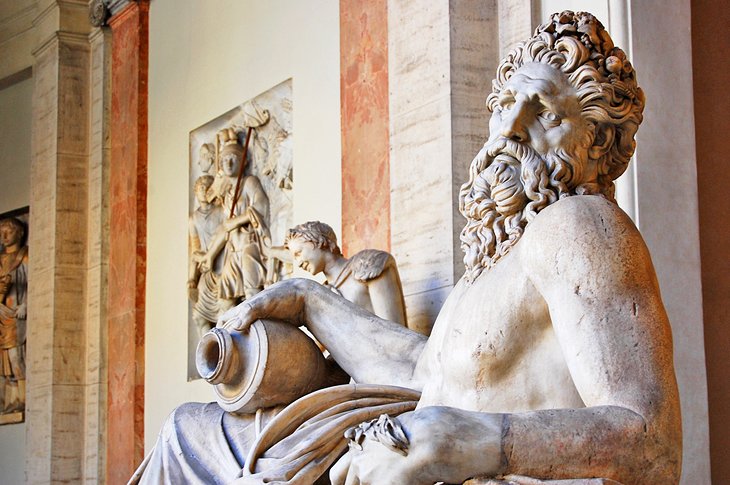
Vatican City museum displaying a collection of ancient Greek & Roman sculptures.
The Vatican Museums have the largest collection of ancient sculpture in the world, mainly found in Rome and the surrounding areas, most of it displayed in the systematic arrangement designed by Popes Clement XIV and Pius VI from 1769 to 1799. These galleries contain such a wealth of magnificent and significant pieces that even a list of the highlights is a long one.
In the Sala a Croce Greca, don’t miss the red porphyry sarcophagi of Constantine’s daughter, Constantia, and his mother, St. Helen, both richly decorated with figures and symbols. In the Sala delle Muse look for Belvedere Torso, a first-century-BC work by Apollonius of Athens that was admired by Michelangelo. In the Gabinetto delle Maschere is a mosaic floor of theatrical masks from the Villa Adriana in Tivoli.
5.St. Peter’s Basilica
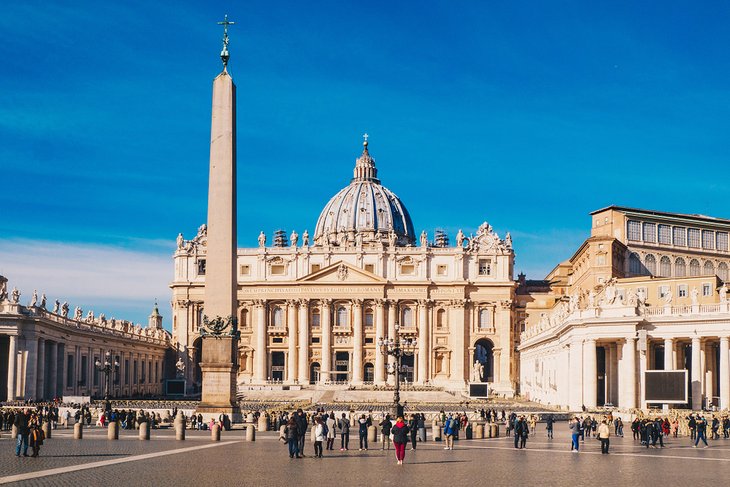
The Papal Basilica of Saint Peter in the Vatican, or simply Saint Peter’s Basilica, is a church built in the Renaissance style located in Vatican City, the papal enclave that is within the city of Rome, Italy.
Catholic tradition holds that the basilica is the burial site of Saint Peter, chief among Jesus’s apostles and also the first Bishop of Rome (Pope). Saint Peter’s tomb is supposedly directly below the high altar of the basilica, also known as the Altar of the Confession. For this reason, many popes have been interred at St. Peter’s since the Early Christian period.
St. Peter’s is famous as a place of pilgrimage and for its liturgical functions. The pope presides at a number of liturgies throughout the year both within the basilica or the adjoining St. Peter’s Square; these liturgies draw audiences numbering from 15,000 to over 80,000 people. St. Peter’s has many historical associations, with the Early Christian Church, the Papacy, the Protestant Reformation and Catholic Counter-reformation and numerous artists, especially Michelangelo. As a work of architecture, it is regarded as the greatest building of its age. St. Peter’s is one of the four churches in the world that hold the rank of Major papal basilica, all four of which are in Rome, and is also one of the Seven Pilgrim Churches of Rome. Contrary to popular misconception, it is not a cathedral because it is not the seat of a bishop; the cathedra of the pope as bishop of Rome is at Saint John Lateran.
6.Vatican Gardens
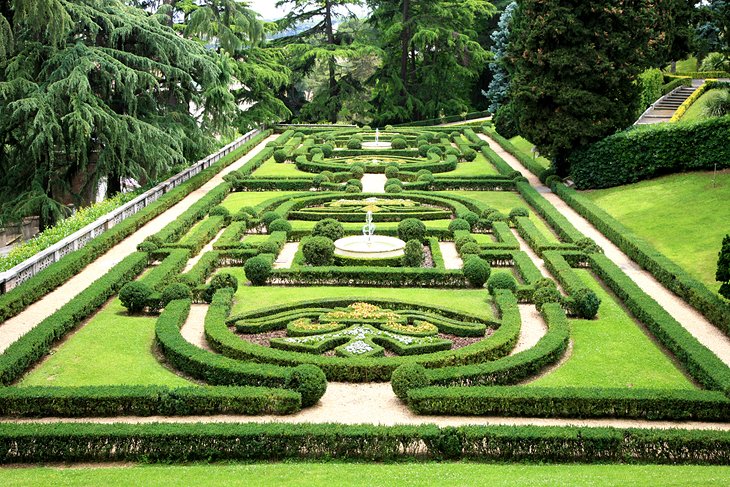
The Gardens of Vatican City, also informally known as the Vatican Gardens in Vatican City, are private urban gardens and parks which cover more than half of the country, located in the west of the territory and owned by the Pope.
Pious tradition claim that the foundation site of the Vatican Gardens was spread with sacred soil brought from Mount Calvary by Empress Saint Helena to symbolically unite the blood of Jesus Christ with that shed by thousands of early Christians, who died in the persecutions of Emperor Nero Caesar Augustus.
Since the end of 2014, the Vatican Museums and the Directorate of Technical Services of the Governorate of Vatican City State have been running the project of restoration and conservation of various stone artifacts in the gardens. The goal of the project has been to prevent the deterioration of the objects of art-historical interest.
7.Egyptian Museum
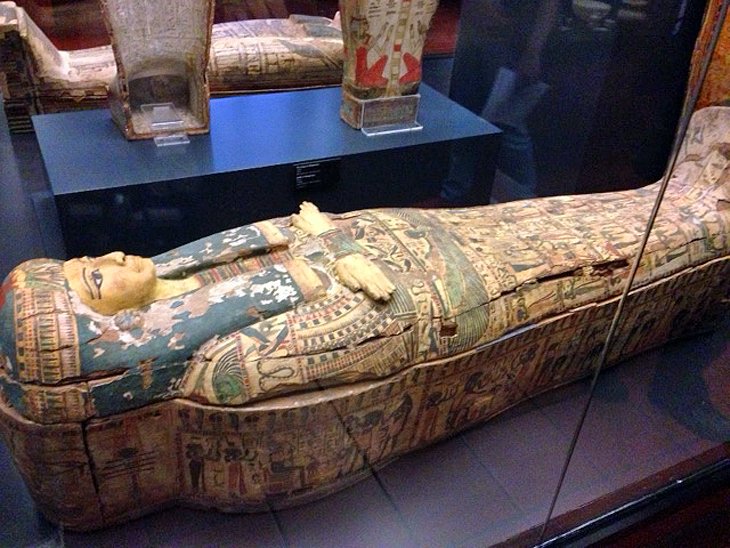
There are two main floors in the museum, the ground floor and the first floor. On the ground floor there is an extensive collection of large-scale works in stone including statues, reliefs and architectural elements. These are arranged chronologically in clockwise fashion, from the pre-dynastic to the Greco-Roman period. The first floor is dedicated to smaller works, including papyri, coins, textiles, and an enormous collection of wooden sarcophagi. The numerous pieces of papyrus are generally small fragments, owing to their decay over the past two millennia. Several languages are found on these pieces, including Greek, Latin, Arabic, and ancient Egyptian. The coins found on this floor are made of many.
Also on the ground floor are artifacts from the New Kingdom, the time period between 1550 and 1069 BC. These artifacts are generally larger than items created in earlier centuries. Those items include statues, tables, and coffins (sarcophagi). It contains 42 rooms; upon entering through the security check in the building, one looks toward the atrium and the rear of the building with many items on view from sarcophagi and boats to enormous statues.
On the first floor there are artifacts from the final two dynasties of Egypt, including items from the tombs of the Pharaohs; Thutmosis III, Thutmosis IV, Amenophis II, Hatshepsut, and the courtier Maiherpri, as well as many artifacts from the Valley of the Kings, in particular the material from the intact tombs of Tutankhamun and Psusennes I. Two special rooms contain a number of mummies of kings and other royal family members of the New Kingdom. On April 3rd 2021, twenty-two of these mummies were transferred to the National Museum of Egyptian Civilization in Fustat in a grand parade dubbed The Pharaohs’ Golden Parade









